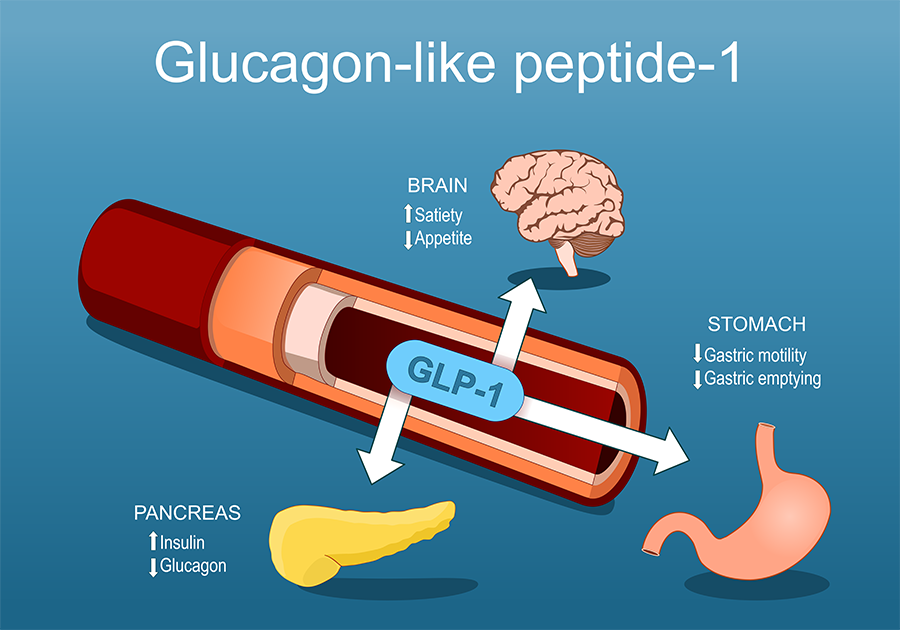


One size does not fit all: GLP-1 weight loss coverage options for three companies
In the United States, 39.6% of adults live with obesity.[1] Glucagon-like peptide-1 (GLP-1) agonists, often used to treat diabetes, heart conditions, and other chronic conditions, are now also being used to treat obesity. There has been growing media attention on GLP-1s and new drug classes for weight management, and there will likely be more demand for them. According to the latest Kaiser Family Foundation Tracking Poll, about 12% of people participating in the poll said they have taken a GLP-1 agonist and 6% indicated currently taking one. Most are taking these to treat a chronic condition. Four in 10 people have taken GLP-1s solely for weight loss.[2]

The greater demand for and use of these drugs has repercussions on pharmacy plans. In 2024, about 33% of employer health plans are offering GLP-1s for diabetes and obesity, up from about 26% in 2023. As part of overall medical claims spending, GLP-1s for obesity went from 6.9% in 2023 to 8.9% this year.[3] These drugs are not cheap. They can cost as much as $1349 per employee per month.[4]
Payers need to be flexible and have options to manage GLP-1s and new drug classes for weight management and their increasing expansion. Right now, there are 260 obesity medications being studied, and their availability in the market will likely increase in 2026.[5]In addition to the standard PBM tools and support mechanisms like pipeline and indication expansion monitoring, formulary placement, utilization management, concurrent and retrospective drug utilization review programs, and pharmacy benefit manager (PBM)-branded and incentivized behavioral weight loss support programs, companies could also be given a choice about how they would like to support weight management solutions that more closely align with their plan benefit and financial goals. They could be supported with standard tools and also have enhanced flexibility, all while receiving analytics and forecasting so their objectives can be met.
Below we discuss three hypothetical employers and how they can manage GLP-1 spend and improve their employees’ health.
Company 1 is a furniture company with 25,000 employees spread across the United States. It has a benefits plan, which offers more than typical employers. A significant portion of its employees are in Louisiana, Tennessee, and Alabama, where obesity rates tend to be higher; these three states are in the top six of states with the highest levels of obesity.[6] The company is looking to attract and retain talent in the South while balancing the plan’s total cost of care. This plan provides omni channel patient engagement that encourages member adherence–that ensures that the investment made is maximized while covered. Company 1 could also consider adding a supplemental weight loss plan to its employee benefits package, allowing employees to decide whether they want to buy it. Because there is so much obesity in this region, it benefits the plan to be able to see total cost of care numbers for members where there may be medical savings.
Company 2 is a health and wellness company with approximately 750 employees, mainly concentrated in the Northeast. This region of the country tends to have a lower obesity rate than other parts of the U.S. The company has a strong wellness focus, and employees are driven to stay in good health. Company 2 is partially reimbursing gym memberships, providing discounted rates on weight loss plans, stocking fruit in its kitchens, and offering nutritional support. Company 2 is on the smaller side, and in general, covering GLP-1s is more difficult for smaller employers. They often use off-the-shelf plans offered by their insurance carriers and the cost can be too high.[7] This plan must balance offering benefits and managing spend.
Company 3 is a mid-sized self-funded employer which is not able to absorb any spike in spend. For small businesses like Company 3, it may be cost prohibitive to offer coverage for weight loss as it may mean a trade-off for market competitive wages or other benefits the employer would like to offer. Given the cost-benefit analysis, it may simply not be doable without also offsetting with an increase in employee premiums or copays, which is also not ideal. There can be benefit caps and alternative plan coverage for companies like Company 3.
There are many ways to customize a plan to meet an employer’s specific needs when it comes to GLP-1s. Being flexible, understanding the client’s goals, and doing a cost-benefit analysis are key to designing a plan that helps employees and manages costs.
References
[1] Obesity in the U.S. Food Research & Action Center. Accessed on August 22, 2024. Available from: https://frac.org/obesity-health/obesity-u-s-2
[2] Montero, Alex, Sparks, Grace, Presiado, Marley, and Hamel, Liz. KFF Health Tracking Poll May 2024: The Public’s Use and Views of GLP-1 Drugs. May 10, 2024. Accessed on August 22, 2024. Available from: https://www.kff.org/health-costs/poll-finding/kff-health-tracking-poll-may-2024-the-publics-use-and-views-of-glp-1-drugs/
[3] Niasse, Amina. Employer coverage for weight-loss drugs rises sharply, survey finds. Reuters. June 14, 2024. Accessed on August 22, 2024. Available at: https://www.reuters.com/business/healthcare-pharmaceuticals/employer-coverage-weight-loss-drugs-rises-sharply-survey-finds-2024-06-13/#:~:text=NEW%20YORK%2C%20June%2013%20(Reuters,Foundation%20of%20Employee%20Benefit%20Plans
[4] GLP-1s and workforce health: Obesity, Ozempic, and overwhelming unknowns. Kaiser Permanente Business. May 1, 2024. Accessed on August 22, 2024. Available at: https://business.kaiserpermanente.org/california/healthy-employees/pharmacy/weight-loss-drugs
[5] Reagan, Chantell Sell and Midlam, Cory. GLP-1 drugs: Implications for employer health plans. WTW. February 15, 2024. Accessed on August 28, 2024. Available at: https://www.wtwco.com/en-us/insights/2024/02/glp-1-drugs-implications-for-employer-health-plans
[6] Schimelpfening, Nancy. These 10 States Have the Highest Rate of Obesity in the U.S. Healthline. May 24, 2024. Accessed on August 22, 2024. Available from: https://www.healthline.com/health-news/10-states-high-obesity-rates#Top-10-states-with-the-highest-obesity-rates
[7] Munk, Cheryl Winokur. Why half of all workers may struggle to get weight-loss drug health insurance coverage. May 30, 2024. CNBC. Accessed on August 28, 2024. Available from: https://www.cnbc.com/2024/05/30/half-of-workers-may-struggle-to-get-obesity-drug-insurance-coverage.html
